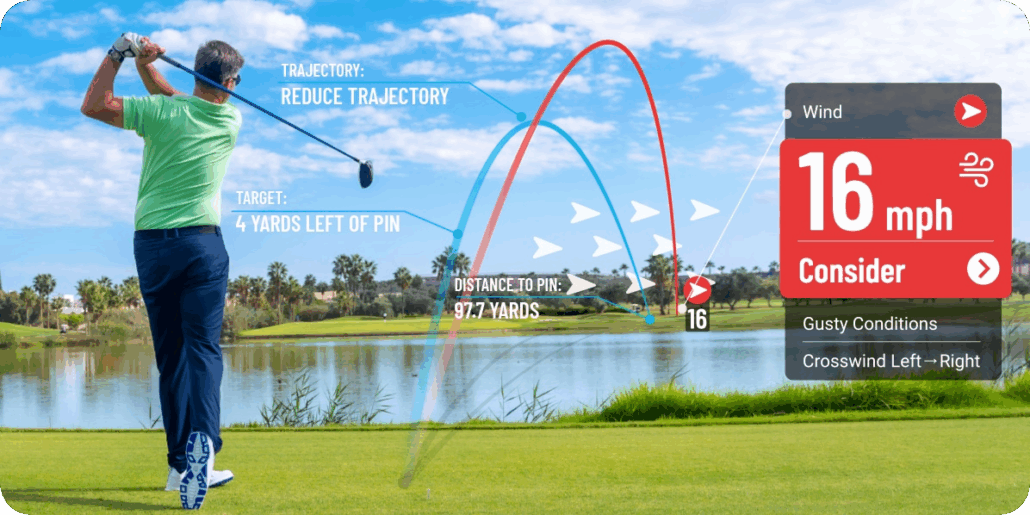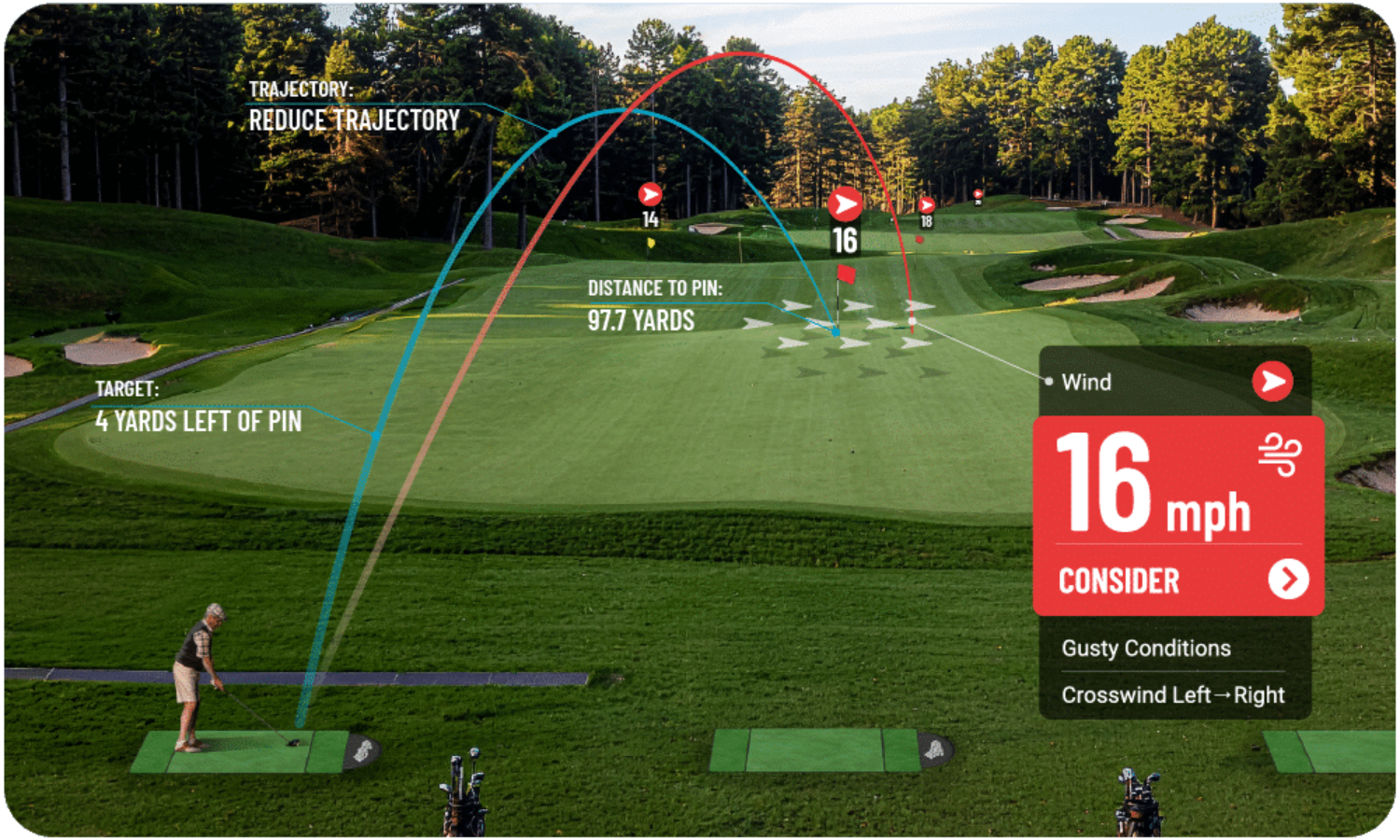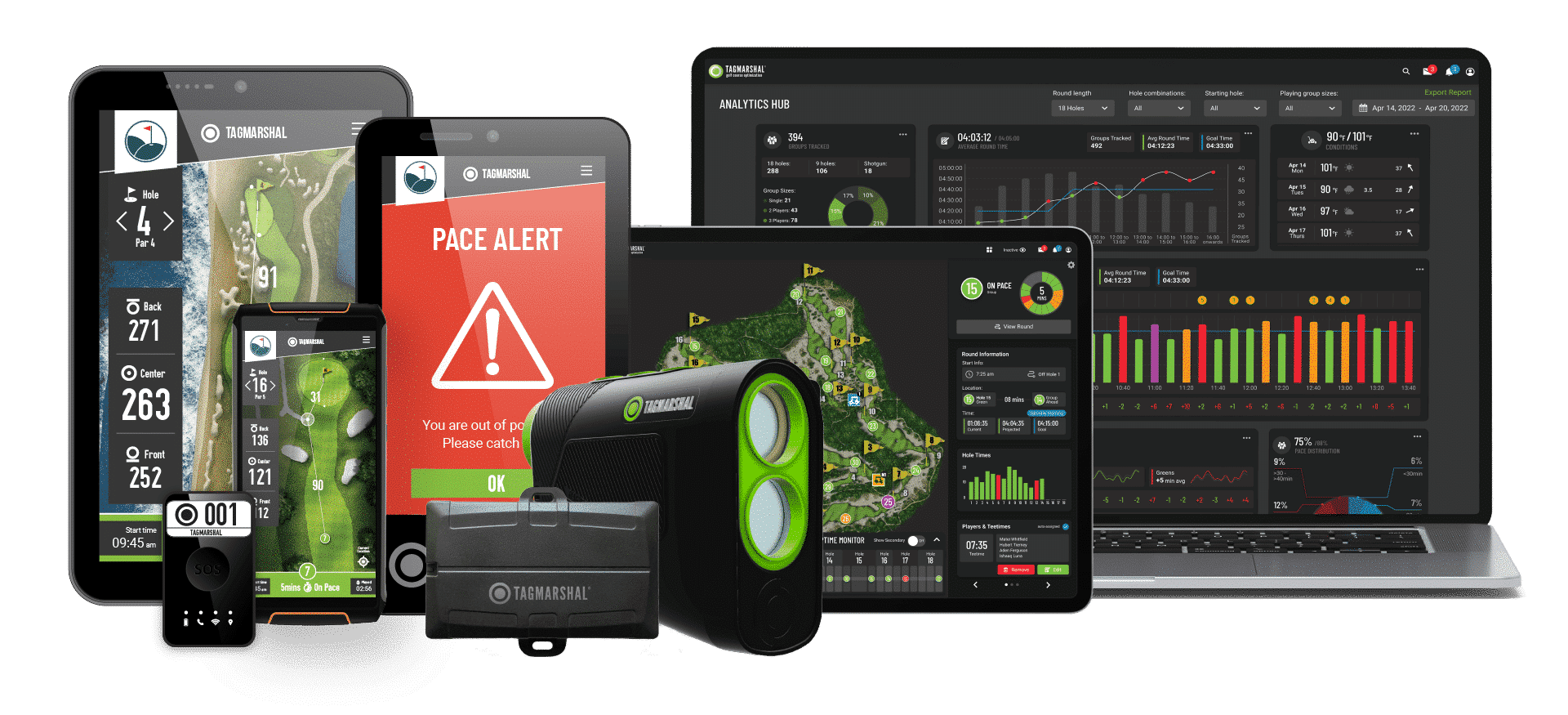Golf Cart GPS Systems and Wind: How to Play Well in Windy Conditions
Anyone who’s played enough golf understands how windy conditions can impact shots, but there are ways to play well in these conditions, especially with golf cart GPS systems. In windy conditions, everything is tougher, but with the right attitude, technique, and tools, you can still shoot a solid score.
Playing in windy conditions goes beyond just a physical challenge; it tests your ability to read the environment, adjust your swing, and make smart decisions under pressure. The wind can alter the trajectory of a ball, reduce or increase distance, and even change how your spin behaves on landing. Even the perfect swing can be undone by a sudden gust of wind.
But learning how to play in these conditions can give you a major advantage, and modern technology, such as golf cart GPS systems, can be a huge help. In this article, we’ll discuss why wind matters, how to calculate its effect, techniques for better shots, practice drills, and how technology like Tagmarshal’s WindTag can support your game.
Golf Cart GPS Systems and Wind: Why Wind Affects Golf
While wind has an impact on most sports, it’s a particularly important factor when it comes to golf. Wind is among the most influential environmental factors in golf, and understanding how it impacts your game is key to maintaining control over your shots. Let’s take a deeper look at why wind matters and how it impacts your game:

Ball In Flight
Wind can easily and dramatically change the path of your golf ball. A headwind may cause the ball to slow down, lose distance, and land shorter than expected. On the other hand, a tailwind can carry the ball further than you initially thought, which may lead to overshooting the target. Crosswinds are especially tricky to deal with, as they may push the ball sideways, leading to missed fairways or greens when unaccounted for.
Even just a slight breeze can mess with the trajectory of the ball. If the ball is in the air, it naturally reacts to the air pressure and wind direction. As such, it’s essential for golfers to anticipate how far it will travel and where it may land.
Spin And Distance
In golf, spin and distance are two major considerations to keep in mind. The wind will interact with the ball’s spin to further influence its movement. For example, backspin creates lift, but a strong headwind can magnify its effect and shorten the distance. Tailwind, on the other hand, can cause the ball to fly lower and faster, while side spin combined with crosswinds can lead to unpredictable hooks or slices.
When you understand the relationship between spin and wind, you can make decisions surrounding club selection, shot type, and swing speed to get more accurate results.
Club Selection Implications
Wind also forces you to rethink your usual club choices. For example, a shot that would normally require a 7-iron may now need a 6-iron into a strong headwind or an 8-iron with a tailwind. If you ignore wind conditions when choosing clubs, it may result in shots falling short, overshooting the green, or landing in hazards.
Golfer’s Psychology
Often, golfers can become tentative, overcompensate for wind, or second-guess swings. Your mental resilience plays a huge role, as anxiety about gusts or unpredictable conditions can lead to poor shot execution. As such, it’s important to develop a calm, strategic mindset for playing on windy days.
Traditional Ways Of Calculating Wind
While golf cart GPS systems and modern-day technology can help, there are many other ways to make smart decisions in windy conditions. Learning to read the wind without technology is a key part of improving your game overall. Here are a few ways to calculate the wind and its impact without technology:

Visual Cues
All across the course, there are visual cues that you can use to learn more about the wind. Flags, banners, and trees all provide insight into both the strength and direction of the wind. For example, a flag blowing straight out is an indication of a strong gust, while gently swaying naturally suggests a lighter breeze.
Furthermore, trees bending at the top, leaves rustling, and ripples on water are all indicative of wind behavior, and the moving clouds can highlight shifts in air currents. By using all the visual cues you have in front of you, you can get a clearer picture of how the wind will affect your ball.
Feeling the Wind
Never underestimate how well your body can serve as a wind gauge. By paying close attention to how the breeze touches your face or hands, as well as how it impacts your movement, you can get a fairly solid idea of the strength, direction, and speed of the wind. Keep in mind that open areas, elevation changes, and sheltered spots can cause the wind to vary dramatically.
Estimating Distance Adjustments
Once you have a bit of a handle on the wind’s speed and direction, you can anticipate its effect on your ball. Here are a few tips to keep in mind:
- Headwinds reduce carry and may require stronger clubs.
- Tailwinds increase distance, which may sometimes lead to overshooting.
- Crosswinds push the ball sideways, so it’s best to aim slightly into the wind.
The more that you play, the more experience will work in your favor, and gauging how much distance to add or subtract in different conditions will begin to feel more reliable and less like a guessing game.
Mental Visualization
We’ve already discussed the importance of your mental game when playing in windy conditions, and visualization can be a powerful tool. A “mental wind chart” can help you plan shots in windy conditions more effectively. Picture the ball’s path and how the wind might push or pull it, and adjust the trajectory and target accordingly.
In general, lower-trajectory shots that stay beneath gusts are safer than high-lofted shots, which are far more susceptible to wind conditions.
Golf Cart GPS Systems: How To Hit Better Shots In Wind

Here are a few tips to keep in mind for hitting better shots in the wind:
Ball Position
You may have to adjust your setup when playing in windy conditions. Placing the ball 1-3 inches back allows you to trap the ball a bit more and encourages a lower ball flight. This reduces the effects of gusts on the shot. A narrower stance can also improve stability, which may make it easier to balance in stronger winds.
Swing Adjustments
Golfers often make the mistake of swinging too hard in windy conditions. The truth is, in windy conditions, smooth and controlled swings are going to be far more effective than pure power. You may have to minimize wrist action to reduce spin against headwinds and focus on tempo rather than power.
Club Selection
In gusty conditions, choosing the right club for the job is even more important than usual. In cases like these, we recommend choosing a club with less loft than you usually would in gentler conditions. This is to keep your shots lower and more controlled. For example, if you regularly rely on a pitching wedge for a certain distance, a gap wedge or sand wedge may be more useful in windy conditions.
Shot Selection
Choosing the right shot is a major part of playing a good game of golf. In windy conditions, embracing the punch shot is a smart move. These low and controlled shots reduce backspin and keep the ball under the wind, which naturally leads to more predictable shots. A knockdown shot is another strong option. This involves slightly delofting the club and shortening your swing to keep the ball flight low.
Golf Cart GPS Systems: Practice Drills For Windy Conditions
With time and practice, your ability to play in the wind is bound to improve. Here are a few practice drills that you can do to speed this process up:
Punch Shots Drill: Punch shots are often a go-to shot when playing in strong winds. Whenever you’re on the range, focus on a lower trajectory by shortening your backswing and using a smooth tempo to maintain more control over ball flight. Repeating the drill will also build muscle memory, which can be of great service on the course.
Knockdown Shots Drill: The knockdown shot is another popular choice for keeping the ball under the gust while still achieving some distance. At the range, deloft your club slightly and compress the ball against the turf. This drill will improve your judgement for real course conditions, where you can adapt club choice and swing strength to match the wind.
Wind Drill: While practicing in real wind would be ideal, you can effectively simulate it on the range. Picture headwind and tailwind scenarios and choose targets that represent different conditions, adjusting your shot accordingly. Into “headwind” – aim for lower, more controlled trajectories. For “tailwinds”, try experimenting with slightly higher shots that ride the air.
Target Practice Drill: A target practice drill is always a great way to improve. As wind exposes flaws in accuracy and distance control, hitting specific targets across the range can teach you how to shape shots intentionally. Over time, you will learn how to control the trajectory rather than letting the wind dictate it.
Golf Cart GPS Systems: Where Tagmarshal Can Help

In the modern game, technology can be used to significantly improve performance in windy conditions. Tagmarshal is the industry leader in golf course optimization and provides courses with full, real-time operational insight and reporting, allowing golf operators to improve the player experience via pace and flow of play management.
Tagmarshal’s industry-first WindTag system uses AI to track how wind affects ball flight, shot dispersion, and pace of play, offering real-time data that helps players make smarter decisions.
With Tagmarshal’s WindTag, you can stop wondering what the wind is doing while tossing grass into the air, and instead get precise data that can significantly improve your game. As the market leader in on-course optimization, our WindTag product allows for a new way of using data for improved club selection and shot strategy. Here is how WindTag helps:
Real-Time, Hyperlocal Wind Conditions
Often, systems rely on weather conditions from distant instruments, but wind conditions are hyperlocal and constantly changing. As such, the information players receive is often inaccurate.

Instead of getting conditions from a beacon at the closest airport, WindTag provides precise wind conditions (speed and direction) in real-time at each pin on the course. This revolutionary technology gathers and transmits data constantly.
Shot Selection and Tips
The WindTag data is displayed on Tagmarshal’s 2Way golf cart GPS systems’ screen devices, as well as on all available screens for tee boxes and yardage markers. As a player, you can use this for wind-adjusted distances and shot planning.
The tech offers real-time AI-powered shot recommendations that take into consideration how wind impacts distance, club selection, shot trajectory, and target. With these additional insights, you can reduce the amount of time you spend planning a shot, improve accuracy, and lower scores.
Daily Pin Locations
Instead of having to manually record and update this each day, WindTag feeds daily pin locations directly into Tagmarshal’s system. Once a new hole is cut and the flag placed back in position, multi-satellite, hyperaccurate locations are automatically logged. All tee box and fairway distance markets are also automatically updated.
Range Usage
At driving ranges, WindTag can be used to give players at each bay the precise distance to each pin. Additionally, players will get shot recommendations based on the pin they’re aiming for. You can benefit greatly from being able to practice hitting in the wind, allowing you to further fine-tune your distance control.

Golf Cart GPS Systems: Get In Touch With Tagmarshal Today
Learning to play a good game of golf in windy conditions requires a blend of skill, strategy, and the right tools. When you understand how wind affects ball flight, spin, and club selection, practice specific shots, and use tools like Tagmarshal’s golf cart GPS systems and WindTag features, you can turn a challenging day into opportunities for improvement.Stay adaptable, confident, and ready to elevate your game, no matter the conditions. Explore Tagmarshal today to experience real-time wind data and smarter shot planning in every round.
EXPLORE THE FULL RANGE OF TAGMARSHAL’S SYSTEM FEATURES
Watch Demo
ABOUT TAGMARSHAL
Tagmarshal, the market leader in on-course optimization technology, provides courses with full, real-time operational oversight and reporting, giving golf operators the tools to manage pace and flow of play effectively, resulting in enhanced player experiences, increased efficiency through automation, and additional revenue generation.
Tagmarshal’s technology has collected over 100 billion data points from more than 95 million tracked and improved rounds of golf and has relationships with in excess of 900 partners, including Hazeltine, Whistling Straits, Baltusrol, Fieldstone, Bandon Dunes, The Old Course at St Andrews Links, Serenoa and Erin Hills.
Tagmarshal partners with several golf management groups, private, daily fee, public and resort courses, including 50 of the Top 100 courses, as well as many $40-$60 green fee courses, which are seeing excellent results using the system.
 WATCH DEMO
WATCH DEMO